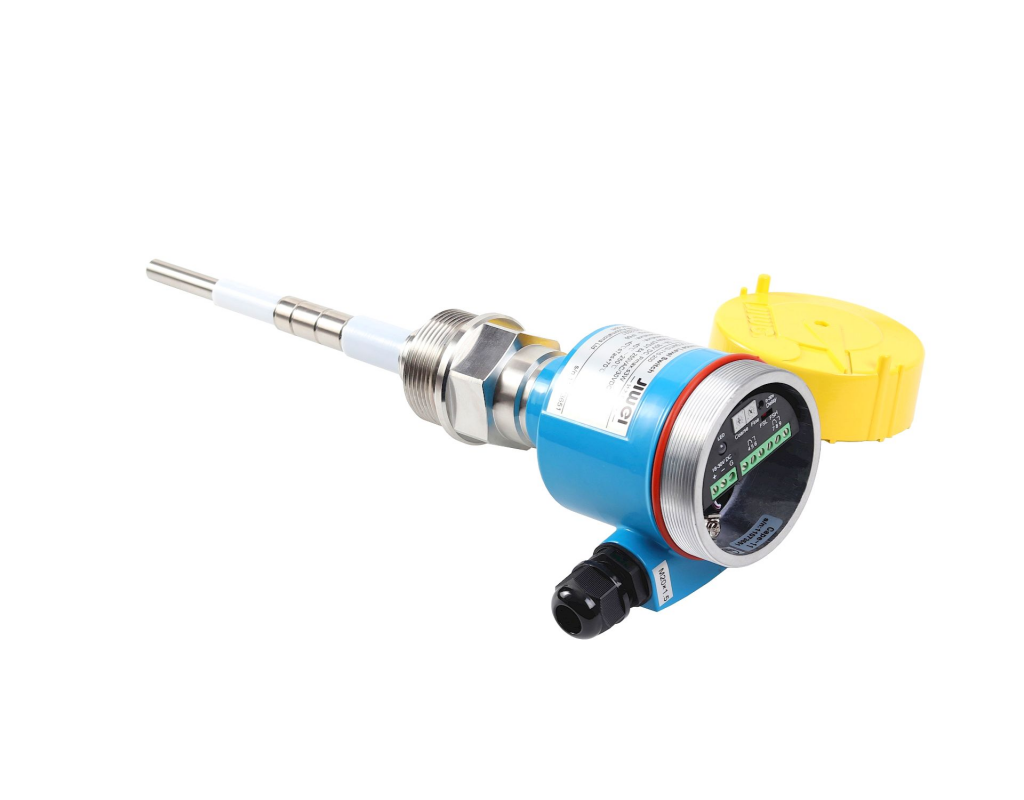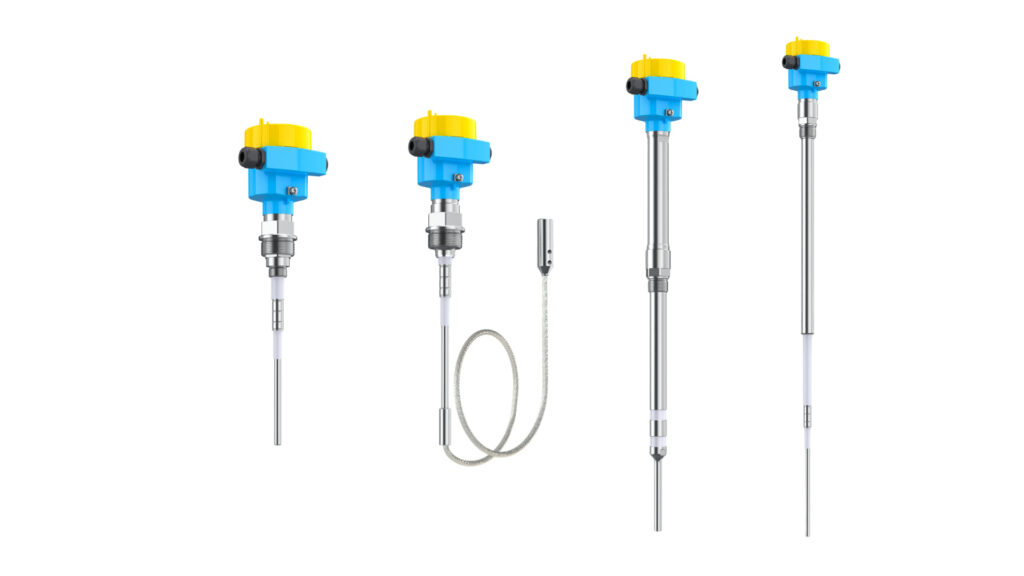Why RF Admittance Level Switches Can’t Achieve Full Explosion-Proof
RF admittance level switches are level detection devices based on the principle of high-frequency admittance variation. They are widely used for level control of powders, granules, and liquids in various industrial applications. The typical construction consists of an electronic head module, process connection, and sensor probe, where the probe is composed of nested stainless steel metal layers and PTFE insulation layers.
Principle of Operation of RF Admittance Level Switches
Upon powering up, the internal electronics of the RF admittance level switch form a high-frequency balanced bridge circuit between the probe’s measuring electrode and the empty tank body, generating a stable RF oscillation signal. This RF signal is simultaneously applied to the measuring electrode and, through a 1:1 voltage follower, to the reference electrode, ensuring the measuring and reference electrodes maintain equal potential, phase, and frequency while remaining electrically isolated.
When the measured medium covers the probe, the admittance between the probe and tank changes, causing the bridge to become unbalanced and the oscillation to cease. This change is detected and triggers a relay or switch output, providing a level alarm. The design effectively eliminates false alarms caused by material buildup on the probe because the potential difference between the measuring and reference electrodes is zero, meaning buildup does not affect measurement accuracy.
Inherent Limitations Preventing Full Explosion-Proof Certification
However, due to the fundamental operating principle of RF admittance, the metal portion of the probe functions as an exposed conductor carrying high-frequency voltage during operation. This inherent characteristic imposes a fundamental limitation that prevents the entire device from achieving full flameproof explosion-proof certification.

Conflict Between Explosion-Proof Standards and RF Admittance Probe Structure
According to the Chinese national standard GB 3836.2-2021 “Explosive Atmospheres — Part 2: Equipment Protection by Flameproof Enclosures ‘d’,” flameproof devices must meet two critical requirements:
- Pressure Resistance: The enclosure must withstand the pressure generated by internal combustible gas explosions without damage or dangerous deformation.
- Flameproofing: The enclosure must prevent flames and hot gases from escaping through joints and igniting explosive atmospheres outside the enclosure.
Consequently, all energized components capable of sparking or arcing must be fully enclosed within the flameproof housing, with no exposed parts.
The RF admittance level switch’s working probe:
- Has an exposed structure directly inserted into the material vessel;
- Features a metal measuring electrode that carries high-frequency electrical signals;
- Forms an integrated electrical circuit path with the head unit.
This configuration clearly makes it impossible to fully enclose the energized metal probe within a flameproof housing, violating the strict requirement for complete sealing of power circuits. Therefore, the RF admittance level switch as a whole cannot comply with the certification requirements for flameproof explosion-proof devices.
Misconceptions and Market Confusion Regarding “Head Unit Explosion-Proof” Certification
Some manufacturers claim their RF admittance level switches have explosion-proof certification. In reality, only the electronic head’s circuitry holds certifications such as Ex d IIC T6 Gb. This practice is highly misleading because:
- Explosion-proof equipment in hazardous areas requires whole-device certification (head and probe integrated).
- Exposing energized probes in hazardous environments while only certifying the head unit’s enclosure does not eliminate ignition risks.
- It misleads end-users, engineering firms, and procurement departments into believing the entire device is suitable for explosive atmospheres, posing serious safety risks.

Recommended Alternatives for Explosion-Proof Level Measurement
For industrial sites requiring explosion-proof level instruments, it is advisable to avoid RF admittance level switches and instead select devices with full explosion-proof certification, such as:
| Type | Explosion-Proof Capability | Probe Condition | Recommended Application |
|---|---|---|---|
| RF Admittance Level Switch | ❌ Not certified as whole-device | Exposed energized probe | Non-explosive environments only |
| Tuning Fork Level Switch | ✅ Certified with flameproof enclosure | Fully enclosed probe | Explosion-proof zones; liquids and solids |
| Vibrating Rod Level Switch | ✅ Certified with flameproof enclosure | Probe suitable for flameproof housing | Explosion-proof zones; powders and solids |
Conclusion
While RF admittance level switches offer high sensitivity and reliable control in non-explosive environments, their probe design and energized characteristics fundamentally prevent full flameproof explosion-proof certification. For safety-critical applications in hazardous atmospheres, devices with complete explosion-proof certification must be employed to ensure personnel and equipment safety.
As manufacturers of industrial instrumentation, we must adopt a rigorous and pragmatic approach to product certification and marketing. Partial certifications such as “head unit explosion-proof” must not be misrepresented as whole-device explosion-proof, nor should misleading information be used to deceive customers. Only through honesty and stringent quality and compliance control can we build a solid foundation for safe industrial operations.

